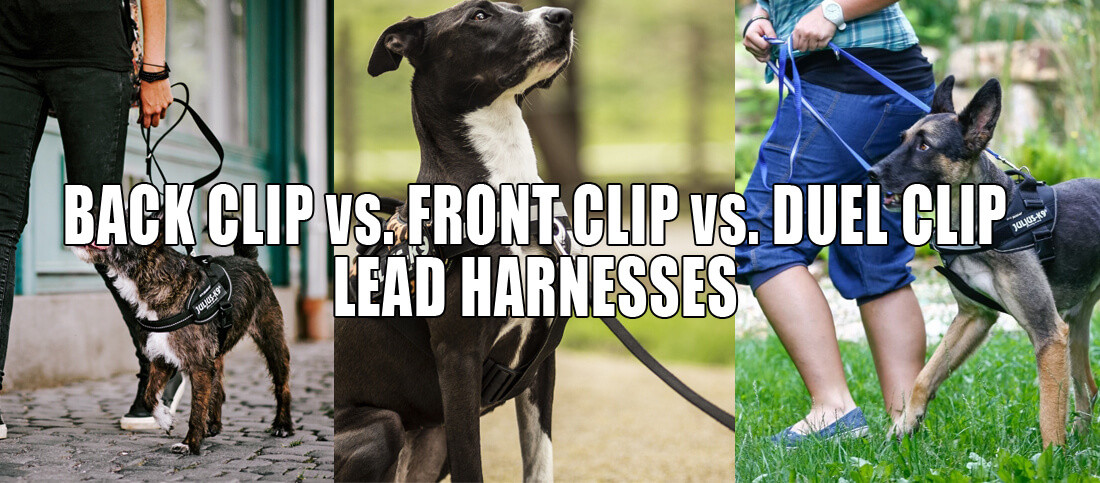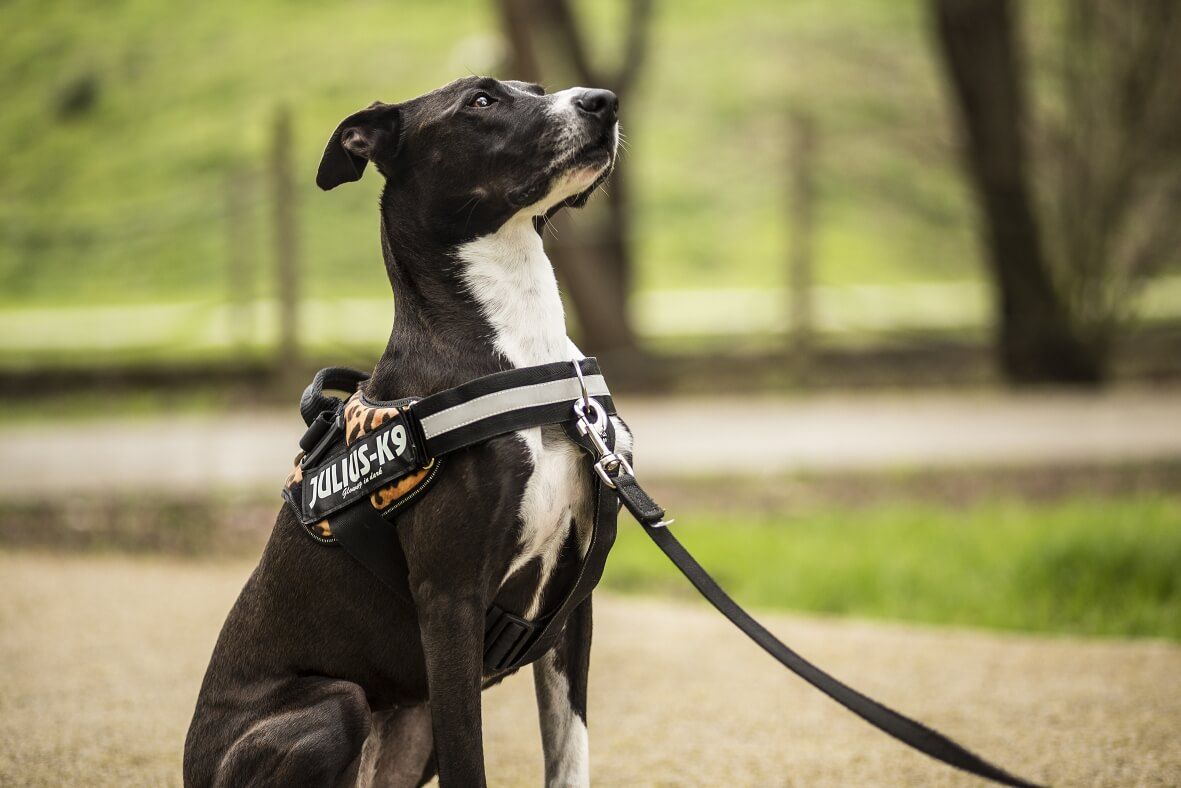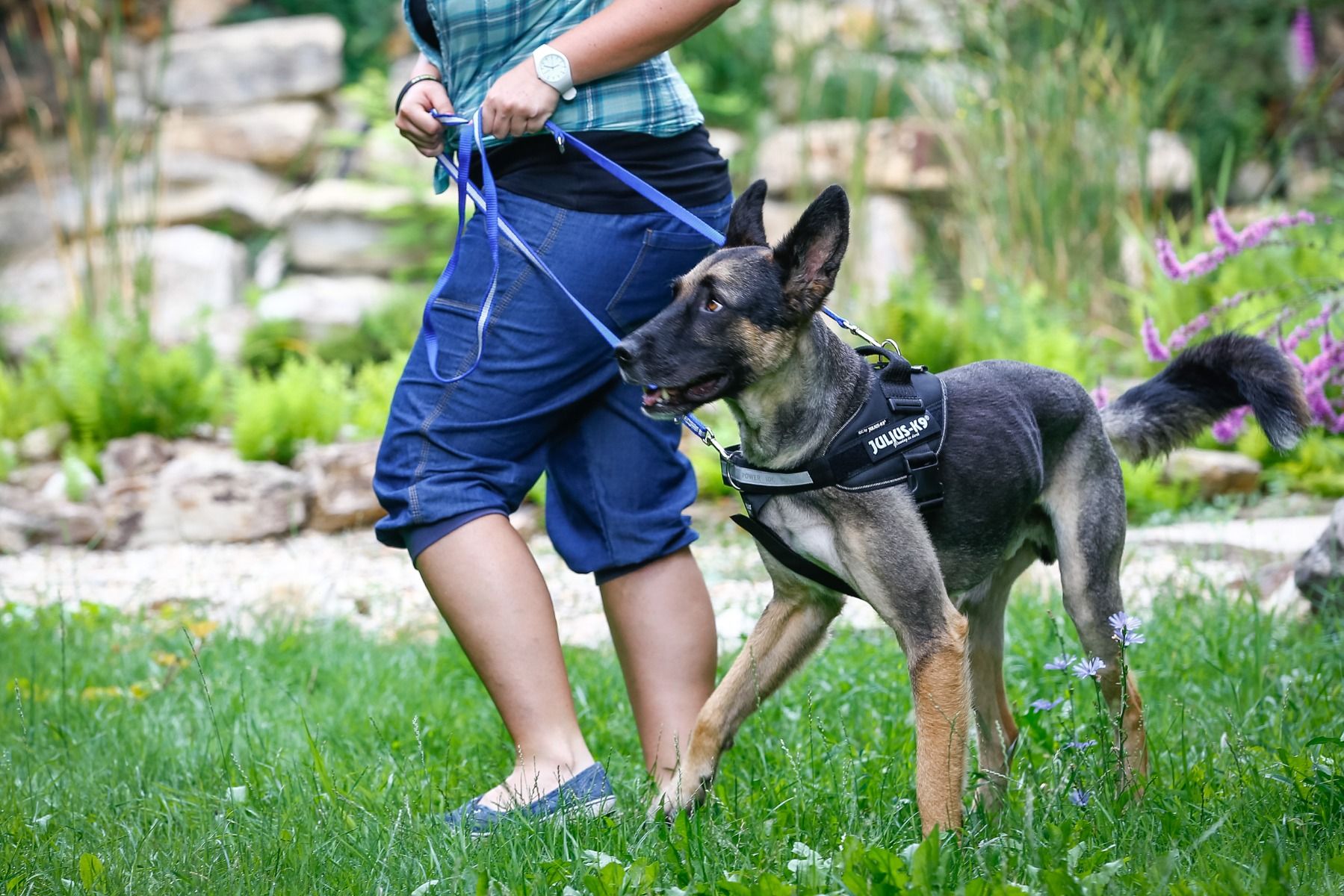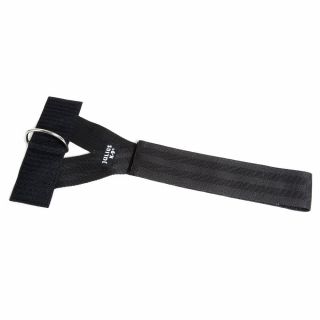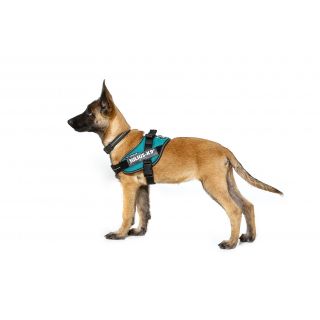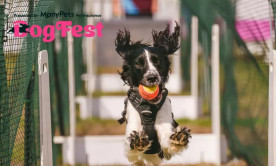Choosing a harness that has the best lead attachment for your dog depends on your walking needs and how well trained your dog is on leash.
Dog harnesses come in three types of lead attachment:
- Front leash attachment
- Back leash attachment
- Duel-clip front and back attachment
Here at Julius K9 all of our leads have back leash attachment, but with our IDC® Control Y Belt With Front D-Ring attachment you can turn any of our IDC® Powerharness products into a Front leash or Duel-clip harness.
Below we breakdown the benefits and potential draw backs of each leash attachment type.
Back Lead Harnesses
Back leash harnesses have the D-ring for leash attachment located at the top of the harness, so leash control is focused on the dog’s back.
This is the most common type of leash attachment as the harness is simple to put on and dogs tend to adapt to this type of leash control quicker.
Pros:
- Harnesses are easier to put on and remove compared to front lead designs.
- Dogs tend to learn leash walking quicker with back leads.
- Reduced chance of discomfort from leash pulling.
- Better protects your dog’s neck area due to more even weight distribution.
- Leads are less likely to get tangled under the dog’s front legs.
Cons:
- Provides less control over poorly trained dogs that jump and pull when compared to front lead harnesses.
All Julius K9 Harnesses, including our hugely popular IDC® Powerharness range, have back-leash attachments.
Front Lead Harnesses
Front lead harnesses have the D-ring on the dog’s chest. This type of lead attachment is more popular with professional trainers or pet owners teaching their dog lead discipline. Having the leash attached to the front of the harness also allows for a lot more control over the dog when it pulls while allowing easier directional steering.
Pros:
- Allows more control against pulling from poorly behaved dogs and dogs in leash training.
- Easier to steer dogs.
Cons:
- Leashes can have a tendency to get tangled around the dog’s front legs.
- Some owners find front lead harnesses fiddly to put on and remove.
- Some poorly designed front leash harnesses are not ergonomically designed and can cause chest and neck discomfort/injuries.
Duel-Clip Harnesses
Duel-clip, or multi-clip, harnesses have D-Rings for leash attachment on the chest and on the back, giving pet owners a choice of control types.
Using a Double Lead Adapter (like our Super Grip Double Lead) means owners can also use both the front and back D-Ring for maximum control. This is especially useful for leash training larger breeds or high energy and poorly behaved dogs.
Pros:
- Gives dog owners the choice and flexibility of front-clip and back-clip harnesses.
- Allows owners to use a Double Leash for even more control.
- Using a double leash also applies pressure more evenly which further helps prevent injuries caused by pulling.
- Best option for leash training bigger breeds or high energy small dogs.
- Some back lead harnesses can be adapted into duel-clip harnesses with easy attachments (like our IDC® Control Y Belt With Front D-Ring)
Cons:
- Added expense.
- Better used for leash training instead of everyday use due to owners and dogs developing an over dependency. Duel-clip harnesses is no substitution for a well trained, well behaved dog.
Adapter for Back Lead Harnesses
Our IDC® Control Y Belt With Front D-Ring attachment adds a front control option to any harness in our IDC® Powerharness range.
>Buy here<
Double Leash Attachment
Using a double lead attachment with the Y Belt, you can maximise control by having front and back control simultaneously.
>Buy here<
